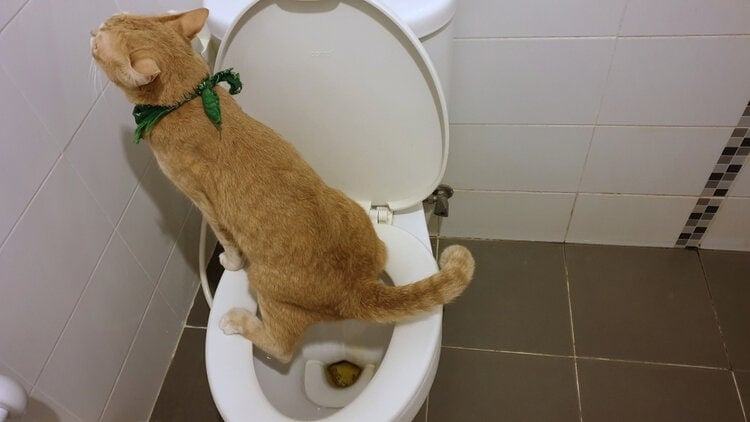Explanations Why You Have to Never Empty Animal Waste Down the Toilet
Explanations Why You Have to Never Empty Animal Waste Down the Toilet
Blog Article
Right here below you can get some great material related to 4 Reasons Why Dog Poop Cleanup is Important.

When it involves dealing with waste, particularly animal waste, many individuals usually resort to the convenient option of flushing it down the commode. Nonetheless, this apparently very easy remedy can have significant effects for the setting and public health. In this post, we'll check out why flushing animal waste down the toilet is a bad idea and provide alternative approaches for appropriate disposal.
Introduction
Proper garbage disposal is vital for preserving environmental sustainability and public health. While it may appear safe to flush animal waste down the commode, it can cause various problems, both for the setting and human wellness.
Threats of flushing animal waste
Ecological effect
Purging animal waste presents harmful germs and virus into waterways, which can adversely influence aquatic communities. These virus can infect water resources and injury aquatic life, disrupting delicate environments.
Public health worries
Pet waste has harmful germs such as E. coli and Salmonella, which can present significant health and wellness risks to people. Purging animal waste down the toilet can pollute water products, leading to the spread of diseases and infections.
Alternatives to flushing
Rather than purging pet waste down the bathroom, there are a number of alternate disposal techniques that are a lot more eco-friendly and sanitary.
Composting
Composting pet waste is a green method to throw away it. By composting, raw material is broken down into nutrient-rich soil, which can be utilized to fertilize gardens and plants.
Land fill disposal
Taking care of pet waste in a garbage dump is another alternative. While not as eco-friendly as composting, it is a much safer option to flushing, as it protects against the contamination of water resources.
Family pet garbage disposal systems
There are customized animal garbage disposal systems readily available that safely and hygienically throw away animal waste. These systems usually use enzymes to break down waste and remove smells.
Steps to proper animal garbage disposal
To ensure proper disposal of animal waste, comply with these steps:
Scooping and getting waste
Consistently scoop and bag pet waste making use of biodegradable bags. This stops waste from infecting the setting.
Making use of marked waste containers
Dispose of bagged pet waste in marked waste containers, such as compost bins or landfill bins. Avoid flushing it down the commode whatsoever costs.
Cleansing can and animal locations consistently
Routinely tidy litter boxes and pet dog areas to prevent the buildup of waste and microorganisms. Use pet-safe cleansing products to maintain health.
Advantages of appropriate disposal methods
Adopting appropriate disposal techniques for pet waste provides several advantages:
Decreased environmental pollution
Appropriate disposal methods decrease the here risk of environmental pollution, shielding waterways and environments from contamination
Minimized danger of water contamination.
By staying clear of flushing pet waste down the toilet, the danger of water contamination is dramatically minimized, guarding public health.
Improved sanitation and hygiene
Appropriate disposal techniques advertise far better hygiene and health, developing a more secure environment for both humans and animals.
Final thought
To conclude, flushing pet waste down the commode is unsafe to the setting and public health. By taking on different disposal techniques and complying with correct waste administration techniques, we can minimize the adverse impact of animal waste and contribute to a cleaner, much healthier planet.
What To Do With Dog Poo – The Do's And Don'ts Of Disposing Of Faeces
Dog poo bins
Some councils provide dedicated dog waste bins in popular dog-walking areas that can take dog poo that has been bagged but you can legally dispose of dog waste in any public litter bin, as long as it is securely bagged. This also applies to your wheelie bin at home.
Do not flush
Water companies do not recommend flushing dog faeces down the toilet because certain parasites can survive the water processing treatment and are potentially harmful to humans. You should also never consider flushing dog poo that has been bagged down the toilet as the bags will not break down and instead create severe blockages in the sewage system.
In the woods
The Forestry Commission promotes a ‘stick and flick’ method for dealing with waste in the woods. This means finding a stick and using it to flick any poo from off the path so that it is out of the way of other walkers. You could also bury it as long as it is not in an area where there might be livestock.
Livestock
Parasites found in dog poo can be transmitted to livestock if they inadvertently eat infected faeces that has been left on grazing land. This could result in the death of sheep or abortion in cattle so you should always make sure you pick up your dog’s waste in fields where livestock could be present.

Routinely tidy litter boxes and pet dog areas to prevent the buildup of waste and microorganisms. Use pet-safe cleansing products to maintain health.
Advantages of appropriate disposal methods
Adopting appropriate disposal techniques for pet waste provides several advantages:
Decreased environmental pollution
Appropriate disposal methods decrease the here risk of environmental pollution, shielding waterways and environments from contamination
Minimized danger of water contamination.
By staying clear of flushing pet waste down the toilet, the danger of water contamination is dramatically minimized, guarding public health.
Improved sanitation and hygiene
Appropriate disposal techniques advertise far better hygiene and health, developing a more secure environment for both humans and animals.
Final thought
To conclude, flushing pet waste down the commode is unsafe to the setting and public health. By taking on different disposal techniques and complying with correct waste administration techniques, we can minimize the adverse impact of animal waste and contribute to a cleaner, much healthier planet.
What To Do With Dog Poo – The Do's And Don'ts Of Disposing Of Faeces
Dog poo bins
Some councils provide dedicated dog waste bins in popular dog-walking areas that can take dog poo that has been bagged but you can legally dispose of dog waste in any public litter bin, as long as it is securely bagged. This also applies to your wheelie bin at home.
Do not flush
Water companies do not recommend flushing dog faeces down the toilet because certain parasites can survive the water processing treatment and are potentially harmful to humans. You should also never consider flushing dog poo that has been bagged down the toilet as the bags will not break down and instead create severe blockages in the sewage system.
In the woods
The Forestry Commission promotes a ‘stick and flick’ method for dealing with waste in the woods. This means finding a stick and using it to flick any poo from off the path so that it is out of the way of other walkers. You could also bury it as long as it is not in an area where there might be livestock.
Livestock
Parasites found in dog poo can be transmitted to livestock if they inadvertently eat infected faeces that has been left on grazing land. This could result in the death of sheep or abortion in cattle so you should always make sure you pick up your dog’s waste in fields where livestock could be present.

Hopefully you enjoyed reading our part about . Thank you so much for taking the time to read through our blog post. Please set aside a second to share this post if you appreciated it. I praise you for being here. Kindly check up our blog back soon.
Call Today Report this page